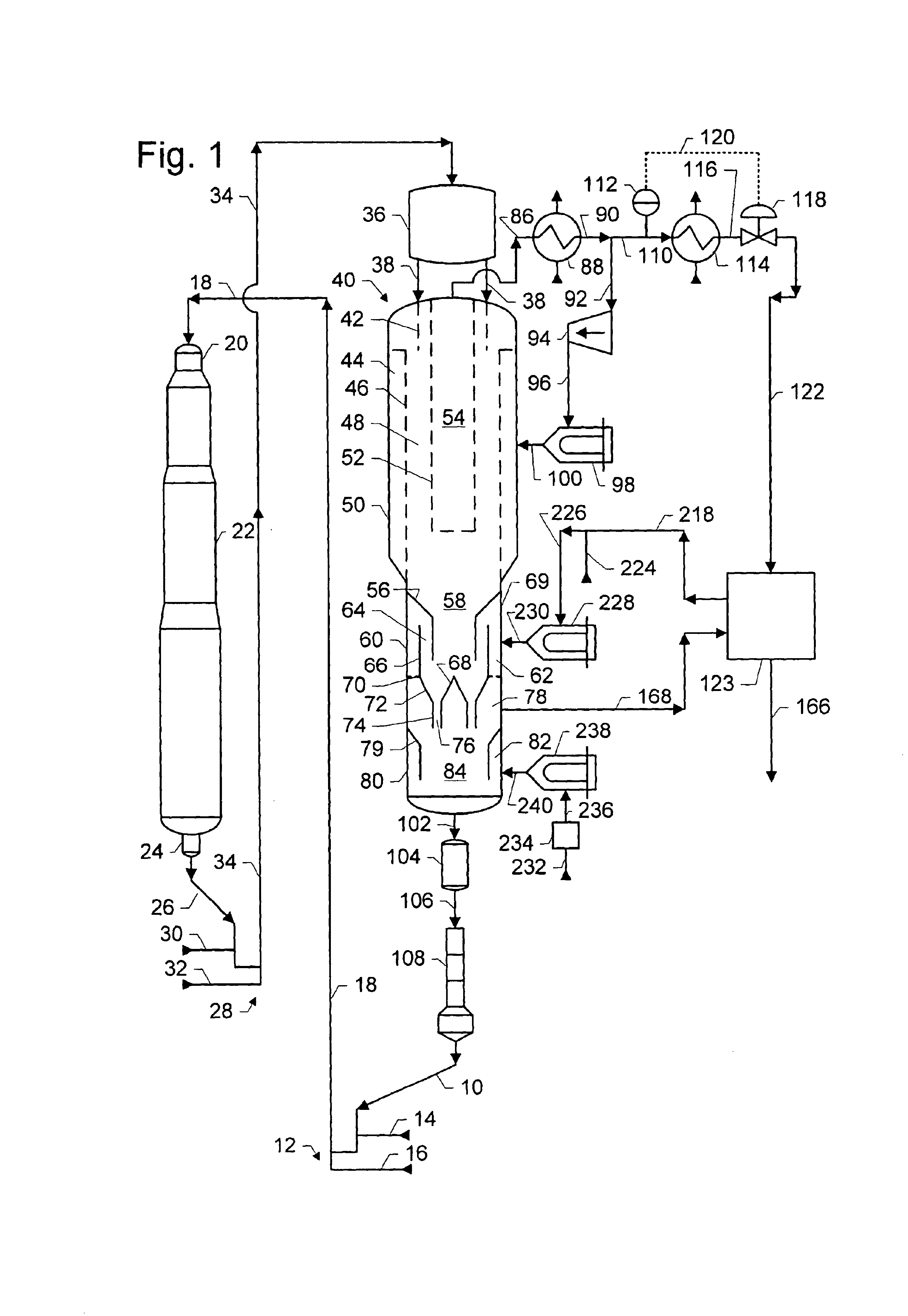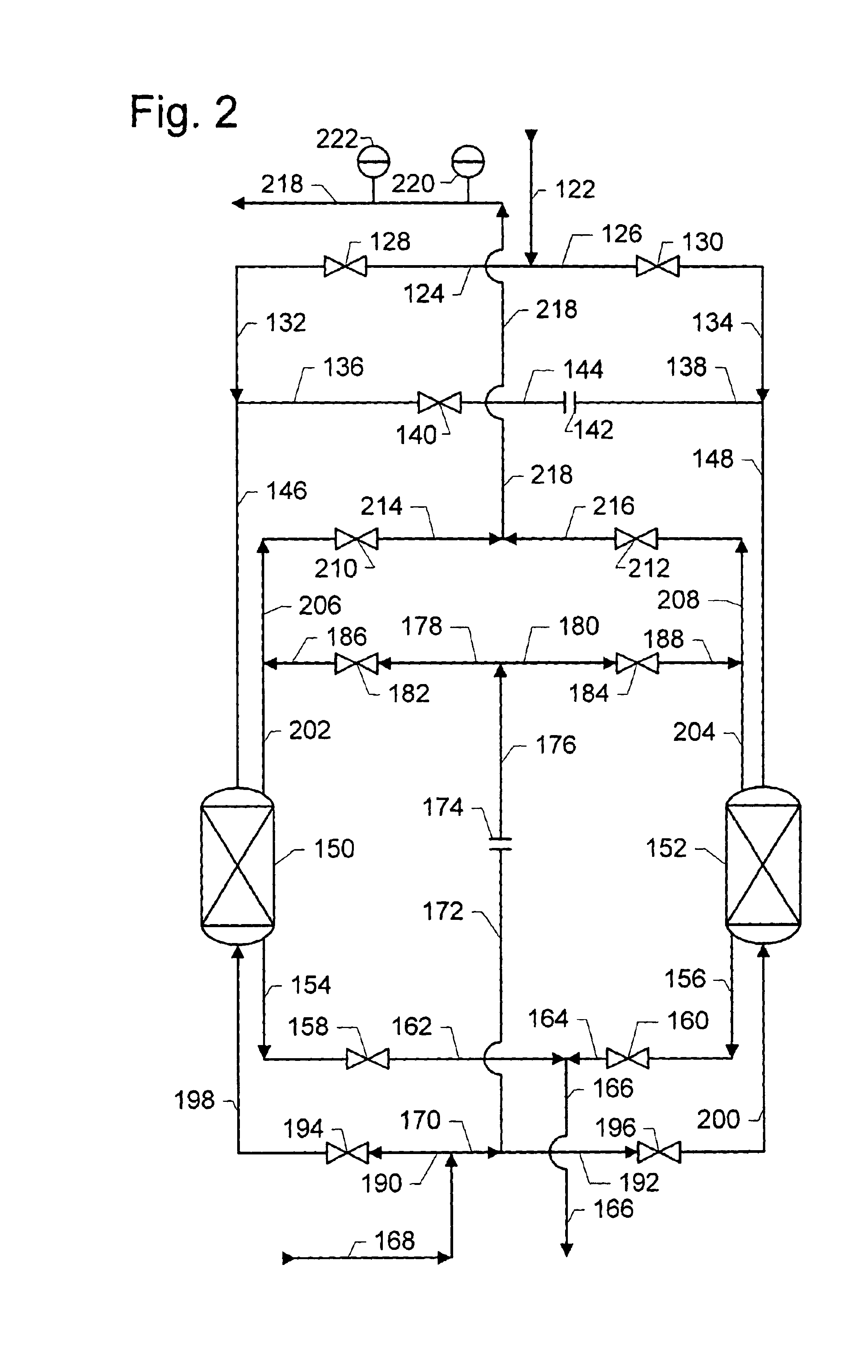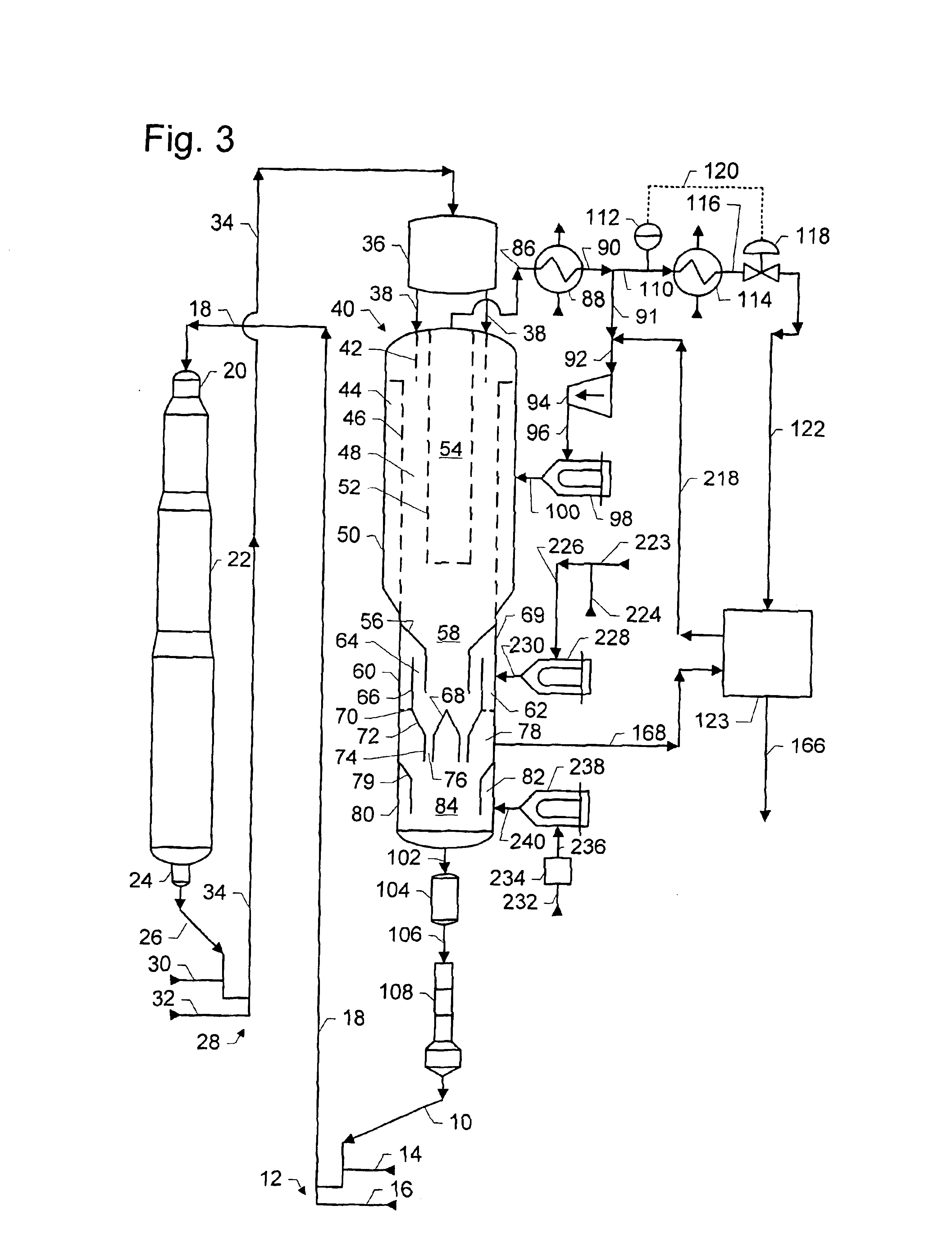Method for removing halogen from a vent stream
a vent stream and halogen removal technology, which is applied in the direction of physical/chemical process catalysts, other chemical processes, separation processes, etc., can solve the problems of complex adsorption of halogen on catalyst particles that circulate through moving bed reaction and regeneration zones, loss of halogen from catalysts,
- Summary
- Abstract
- Description
- Claims
- Application Information
AI Technical Summary
Benefits of technology
Problems solved by technology
Method used
Image
Examples
Embodiment Construction
[0022]The method disclosed herein recovers halogen removed from hydrocarbon conversion catalyst particles undergoing regeneration. Halogen is present in an effluent stream from a catalyst bed undergoing regeneration. A portion of the effluent stream contacts adsorbent to remove halogen. Subsequently halogen is removed from the adsorbent using a stream that has been used or will thereafter be used in regeneration. When this stream containing halogen removed from the adsorbent is used in regeneration, halogen is returned to catalyst particles.
[0023]The method disclosed herein uses at least one adsorbent. The adsorbent removes at least one halogen from a portion of the effluent stream. Any suitable adsorbent may be used. Suitable adsorbents include molecular sieves such as zeolites, clays, inorganic polymers such as alumina and activated alumina, zirconia, carbon, activated carbon, organic polymers such as resin adsorbent, etc. Suitable aluminas include gamma, alpha, theta, etc. One em...
PUM
| Property | Measurement | Unit |
|---|---|---|
| Temperature | aaaaa | aaaaa |
| Temperature | aaaaa | aaaaa |
| Temperature | aaaaa | aaaaa |
Abstract
Description
Claims
Application Information
 Login to View More
Login to View More - Generate Ideas
- Intellectual Property
- Life Sciences
- Materials
- Tech Scout
- Unparalleled Data Quality
- Higher Quality Content
- 60% Fewer Hallucinations
Browse by: Latest US Patents, China's latest patents, Technical Efficacy Thesaurus, Application Domain, Technology Topic, Popular Technical Reports.
© 2025 PatSnap. All rights reserved.Legal|Privacy policy|Modern Slavery Act Transparency Statement|Sitemap|About US| Contact US: help@patsnap.com



